Which wire to use for wiring in the house: recommendations for choosing
It is impossible to build a home electrical network without an electrical cable. However, to furnish your home, it is not enough to install it correctly; you also need to correctly select the appropriate type.And for this you need to know what characteristics influence the choice. Do you agree?
We will tell you what types of products the modern market offers and what wire to use for wiring in the house. We will introduce you to the popular nomenclature and help you understand the labeling of products for laying power lines. Let us indicate what buyers and independent electricians should focus on.
In order to optimize perception, we supplemented the information presented for review with diagrams, photo selections, and video recommendations.
The content of the article:
What are electrical cables made of?
The main elements of any electrical cable are the cores - elements for the passage of electric current, isolated from each other by an internal sheath and enclosed in a common sheath.
They are designated by the abbreviation TPG.
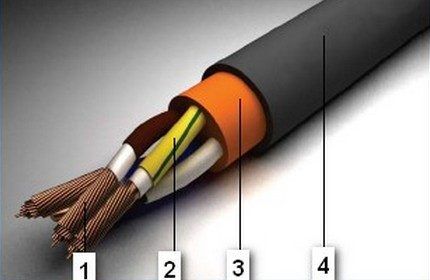
There are two types of conductors for transmitting electrical energy:
- single-wire solid;
- stranded, consisting of a large number of thin threads.
Some people mistakenly believe that single-wire conductors and single-core cables are an identical concept. In fact, single-core products can have only one core, which, in turn, can be made of single or multi-wire.
The basis for the manufacture of current-carrying conductors can be copper or aluminum. If we compare these metals, then aluminum, although it is cheaper, loses in that it has a lower level of electrical conductivity.
This means that with an equal cross-section, a copper conductor is capable of passing more current. The only “minus” of copper is that it cannot be directly combined with other metals. Those. To connect to aluminum, you will need an adapter that eliminates the formation of a galvanic couple.
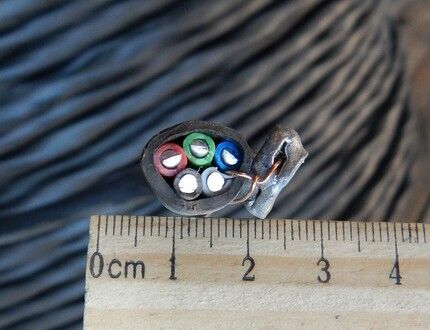
If the connection is made by twisting, then this place will quickly oxidize, which will lead to a break in the contacts, which may result in a short circuit in the line. Ideally, you should choose the same type of wire for all lines in the apartment.
Cables for electrical signals are equipped with a common protective sheath.
The insulating layer can be made of:
- rubber;
- polyethylene;
- PVC plastic.
Each of these materials is characterized by high insulating characteristics. Thanks to this, they can be used in networks of various voltage classes within 500 W.

Any cable used for indoor and apartment wiring, has at least two insulating layers: the first protects the internal cores collected in a bundle, the second encircles only one core.
Types of electrical wires
There are several classifications that masters focus on when choosing cables for wiring in the house.
The first sign by which cables are divided is number of cores. The operational parameters of single- and multi-core products are detailed in the table below.

Below are the four most popular types of cables used in installing indoor wiring.
Type #1 - VVG cable
When arranging indoor electrical wiring, which provides distribution box installation, apply VVG cable. It is used to transmit electric current at an operating voltage within 1000 V. The number of cores in such products can vary from one to five.
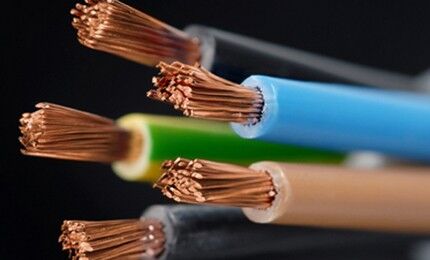
Among the undeniable advantages of VVG products is a wide operating temperature range. It can be safely used at temperatures from -50 °C to +50 °C. The wire is famous for its high tensile strength and ability to withstand humidity up to 98%.
A product of this type can have one of three designations:
- «P» - indicates a flat type of section;
- «h" - means that a rubber compound or PVC strands are located between the TPG insulation and the outer braid;
- «ng» - indicates that the insulation does not propagate fire.
In any cables of the VVG variety, with the exception of those designated “z,” the space between the outer sheath and the insulating layer of the cores is not filled.

For domestic needs, use a cable with a cross-section of 1.5 mm2, when arranging a private house, a 6 mm product2. The bending radius of the product is determined by multiplying the smaller cross-section by 10.
View #2 - NYM cable
NYM – another high-quality power cable designed for conducting power and lighting networks with voltages up to 660V.The multi-wire conductors of the product are made of copper.
The number of conductive cores of an NYM cable can vary from one to five. The minimum parameters of the cross sections of products presented for sale are 1.5 mm2, maximum – 16 mm2.
The bending radius corresponds to four cross-sectional diameters.
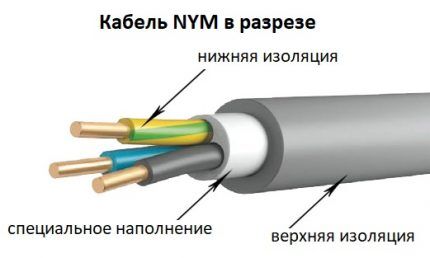
The cable is double insulated:
- the outer shell is made of polyvinyl chloride;
- The inner braid is made of non-flammable PVC.
The internal space between the insulating layers is filled with filler, which is coated rubber. This solution increases the strength of the product and makes it more resistant to high temperatures.
Therefore, NYM cable is one of the moisture- and heat-resistant products. Its operating temperature limits are from -40 °C to +70 °C.
The only drawback of NYM cable is its vulnerability to UV rays. For this reason, when used in an open area exposed to direct rays, it is recommended to cover it.
If we compare NYM cable with its VVG analogue, then the first is more preferable in terms of operational parameters. But if you have a limited budget, you can always save money by using the NYM cable only to connect room and apartment panels to the floor panels, and lay VVG cable in the areas.
Type #3 - PUNP wire
Often a budget analogue is used for wiring - flat wire PUNP. It is a two- or three-core product with a cross section of 1.5-6 mm2. Each strand of the flat wire is made of copper and is single-wire.
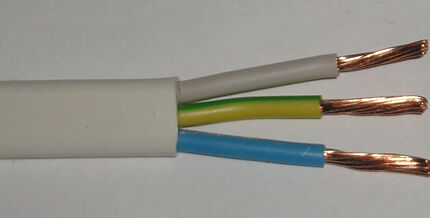
The cable is also double insulated:
- the outer shell is made of PVC plastic;
- The inner braid is made of polyvinyl chloride.
In terms of quality, such a wire is far from the best option. In addition, as practice shows, wire insulation is very vulnerable to temperature fluctuations and quickly collapses when heated.
Type #4 - armored cable VBBShV
When arranging a lighting system for the area adjacent to the house, an armored power supply is the best choice. cable VBBShv. It is designed to operate under alternating rated voltage conditions, the range of which varies from 660 to 1000 V.
It is convenient to install a moisture-resistant product in the ground, in reinforced concrete pipes and in corrugated pipes in the open air, provided that additional protection is created from direct exposure to light rays.
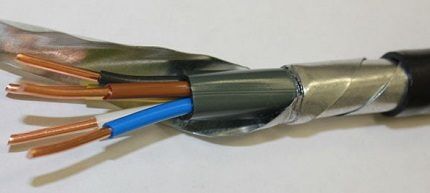
The conductive cores of the product are made of copper. The number of threads can vary from one to five, each of which can consist of one or more wires.
The cross-section of VBBShV products ranges from 1.5 mm2 up to 240 mm2. Polyvinyl chloride is used as internal insulation and outer shell.
Criteria for choosing wisely
The key to uninterrupted operation of the home electrical system is the quality of components. Therefore, at the stage of purchasing them, one of the key tasks is to choose a cable of appropriate quality.
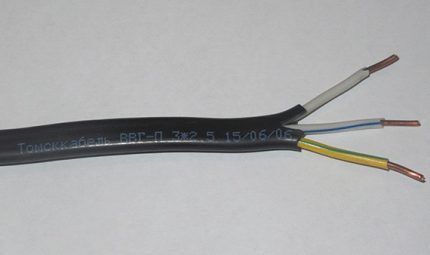
To help you choose the right cable, you need to carefully study the product labeling. The cable must indicate: brand, manufacturer's name and compliance with GOST or technical specifications. The cross-sectional size and grade of the cable must be repeated at equal intervals along the entire length of the outer braid of the product.
The marking of any electrical cable is represented by numbers and three letters.
The first digit of the numerical designation determines the number of cores, the second digit – the cross-sectional area of each of them, the third – the calculated network voltage. The remaining numbers indicate the flexibility class of the cord. The first letter determines the type of material used to create the top braid of the insulation.

The second letter indicates the wire type:
- «TO» — control;
- «P» - flat;
- «M» — installation;
- «Sh" or "U» — installation;
- «Mg» - mounting with flexible core.
The third letter of the marking determines the material used for internal insulation of the cores.
Options for its designation and decoding:
- «P» — insulation is made of polyethylene;
- «IN" or "VR» — the braid is made of rubber;
- «Pv» — vulcanizing polyethylene is used;
- «Ps» — self-extinguishing polyethylene was used;
- «WITH» — the outer braid is made of lead;
Rubber insulation can be protected by a Nairite sheath "N"or polyvinyl chloride"IN».

The following letter indicates the cable type: "NG" - non-flammable and fire-resistant, "B" - armored, "L.S.»—does not emit smoke when melting. Products with an armored shell are used where there is a possibility of mechanical damage.
Presence of the letter “E"informs that there is filler between the cores. Letter combination "coolant" indicates that this is a single-wire conductor.
How to calculate the wire cross-section?
The cross-sectional areas of the cores are standardized. Their values are selected based on the current strength, core material and laying conditions. After all, when operating the cable to the limit of its capabilities, the cores will heat up by several tens of degrees.
And if several such cables are laid in one tray, then with mutual heating of the products, the permissible current will decrease to 30%.
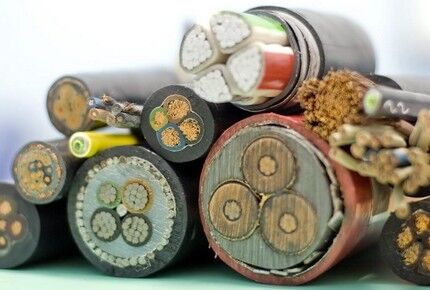
The calculation is done using the following formula P/V.
Where:
- R – power of devices, the parameters of which are indicated in the technical documentation;
- V – mains voltage 220 V.
The cross-sectional area is measured in square millimeters. Thus, one “square” of aluminum wire is capable of passing through itself from 4 to 6 Amperes. For the copper analogue, this parameter reaches 10 Amps.
For example, for an electrical appliance with a power of 4 kilowatts, according to this formula, the current becomes equal to 18.18 A = 4000 W/200V.To power such a device, you will need to lay wiring with copper threads with a cross-section of 1.8 mm2.
As a safety net, it is better to additionally multiply the resulting value by 1.5. Therefore, the most ideal option for powering such a powerful device is a copper wire with a cross-section of 2 mm2. If we consider the option of installing an aluminum analogue, then you will need a cord whose thickness is 2.5 times greater.
Simplify the task by calculation of wire cross-section The table below will help.
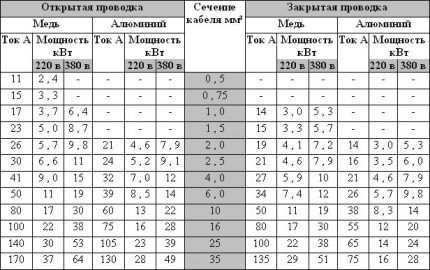
Important point! When designing hidden wiring, the data from the table must be multiplied by a factor of 0.8.
If open, it can be installed in the same private house; in any case, for reliability, it is better to use a wire with a cross-section of 4 mm or more2 and higher, giving preference to products with high mechanical strength.
In terms of the cross-sectional plane, the installation cable for entry into the house should be one step higher than that required for servicing the most installed electrical appliances.
To save money, such a wire can be used only for entering the house and connecting it to the terminal block, and through the machines the lines of the required cross-section can be routed.
According to the requirements of PUE PUE 7.1.34, each line must be calculated separately with a focus on a specific load. However, there are options with standard cross-sectional sizes that are acceptable for all residential properties:
You will learn about which cable you need to use for electrical wiring in a wooden house from another popular article our site.
Conclusions and useful video on the topic
Before choosing and practically using wires, it is better to remember the theory again by watching useful videos.
Video #1. How to choose the right wire:
Video #2. Expert advice on which wire is better for the home:
The price range of electrical cables on sale is quite wide. But you shouldn’t skimp on this issue. A reduced price may indicate that poor quality materials were used in the production of the cable product, or that the wire has a cross-section smaller than the declared one.
When purchasing products from Chinese manufacturers, be prepared for the fact that in an effort to save money, many of them use copper-plated aluminum wires instead of copper conductors. Externally, they are practically no different from their copper counterparts, but differ only in performance characteristics.
Do you have useful recommendations that you would like to share with site visitors and us? Do you have any questions while reading the information? Please write comments in the block below the text of the article.




When changing or installing new electrical wiring in an apartment, I recommend always using a stranded multi-core copper cable. This is the key to the durability and safety of electrical wiring. Be sure to calculate the power of electrical appliances and use a cable of a suitable cross-section with a power reserve of one and a half. This will prevent the cable from overheating and premature aging of the insulation.
Good afternoon, Valery.
The capacities of refrigerators, washing machines, and other household electrical appliances are indicated on nameplates and in passports - no one calculates them. They calculate the loads of group lines, laying down the development prospects (the PUE does not stipulate reserves).
Regarding the 1.5-fold reserve, I doubt that the amount of residential capacity can increase that much. Suppose, after all, you have acquired something very powerful - then you can run an additional line from the apartment panel.
There are many recommendations, but the main one is to abandon aluminum in favor of copper. Naturally, such a replacement of wiring will require a major overhaul. But you cannot connect copper wires to aluminum wires directly. This must be done through adapter blocks. Such options are resorted to when it is necessary to connect the replaced copper wiring in an apartment with aluminum wires that are laid in the rest of the house.
Electrical appliances used in everyday life have a rated power rating.The total power in the house and individual rooms is used to calculate the network; try not to take into account the simultaneity factor. We will set aside 50% for future electricity consumers. The permissible current load is 10A/sq.mm to prevent overheating of the wires. And I would also like to say: try not to use multi-core wires and cables (only in carrying cases), their connection in the terminal blocks weakens over time, which cannot be said about single-core ones.
Good afternoon, Alexander.
Your call to try not to take into account the simultaneity coefficient contradicts SP 256.1325800.2016. There, paragraph 4.1 obliges designers to take into account many regulatory documents that operate with the simultaneity coefficient. Clause 12.6 of this SP states: the cross-section of the supply conductors is determined by the sum of the currents of the connected equipment - the simultaneity factor is taken into account.
You advise a 50% reserve for the future. Following your recommendation will significantly increase the cost of power supply to the apartment. Even a 20 percent reserve is provided for in a typical power transformer design, and for rural projects, networks can have a 30 percent capacity reserve.
The only thing that can be recommended is to install an input panel with reserve spaces for future connections.
We got a cheaper one, it’s called PugVV, it’s a little thin, but it’s good for a garden house. I looked at these in the store, the prices on them are simply outrageous.
Thanks to this, they can be used in networks of various voltage classes within 500 W. Do you at least edit the text?
Thanks for the signal. The error has been corrected. Indeed, they missed the author's mistake.